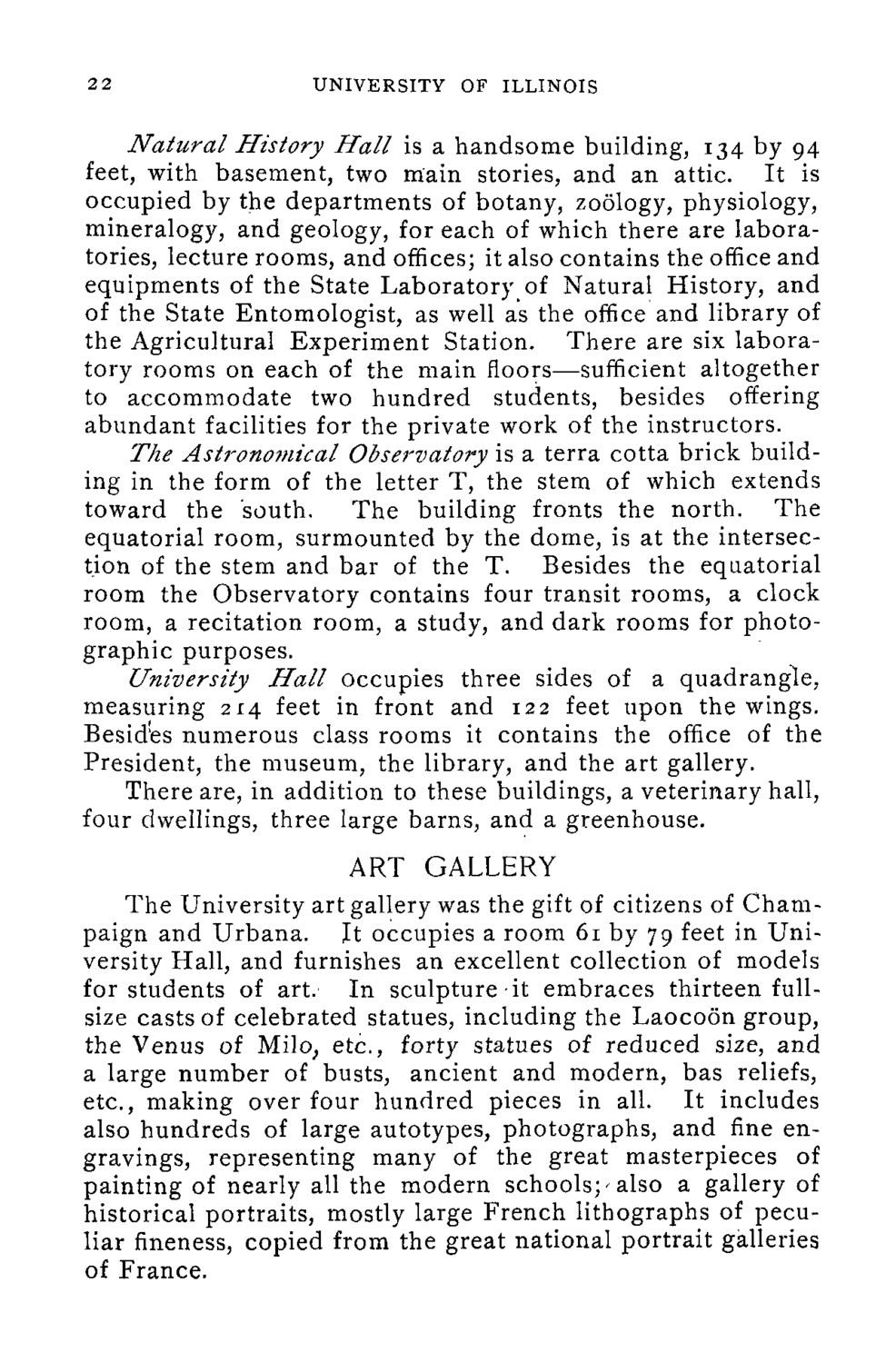| |
| |
Caption: Course Catalog - 1896-1897
This is a reduced-resolution page image for fast online browsing.

EXTRACTED TEXT FROM PAGE:
22 UNIVERSITY OF ILLINOIS Natural History Hall is a handsome building, 134 by 94 feet, with basement, two main stories, and an attic. It is occupied by the departments of botany, zoology, physiology, mineralogy, and geology, for each of which there are laboratories, lecture rooms, and offices; it also contains the office and equipments of the State Laboratory of Natural History, and of the State Entomologist, as well as the office and library of the Agricultural Experiment Station. There are six laboratory rooms on each of the main floors—sufficient altogether to accommodate two hundred students, besides offering abundant facilities for the private work of the instructors. The Astronomical Observatory is a terra cotta brick building in the form of the letter T, the stem of which extends toward the south. The building fronts the north. The equatorial room, surmounted by the dome, is at the intersection of the stem and bar of the T. Besides the equatorial room the Observatory contains four transit rooms, a clock room, a recitation room, a study, and dark rooms for photographic purposes. University Hall Occupies three sides of a quadrangle, measuring 214 feet in front and 122 feet upon the wings. Besides numerous class rooms it contains the office of the President, the museum, the library, and the art gallery. There are, in addition to these buildings, a veterinary hall, four dwellings, three large barns, and a greenhouse. ART GALLERY The University art gallery was the gift of citizens of Champaign and Urbana. It occupies a room 61 by 79 feet in University Hall, and furnishes an excellent collection of models for students of art. In sculpture it embraces thirteen fullsize casts of celebrated statues, including the Laocoon group, the Venus of Milo, etc., forty statues of reduced size, and a large number of busts, ancient and modern, bas reliefs, etc., making over four hundred pieces in all. It includes also hundreds of large autotypes, photographs, and fine engravings, representing many of the great masterpieces of painting of nearly all the modern schools;'also a gallery of historical portraits, mostly large French lithographs of peculiar fineness, copied from the great national portrait galleries of France.
| |